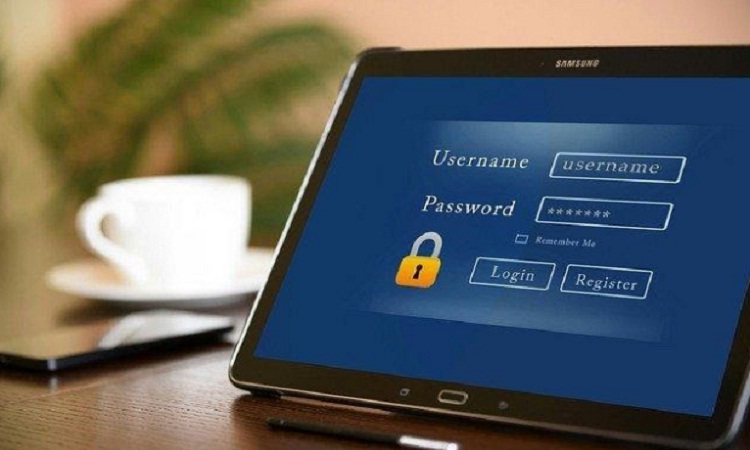
Passwords have always been a security shield for decades to access our accounts and resources, whether it’s a bank and social media accounts or accessing your documents from your secure vault, and much more. We have been using passwords to protect and secure our accounts from unauthorized access and maintain privacy and confidentiality since the mid – 1960s when computers first came into use.
Over the decades, emerging security threats and breaches have proved that passwords are notoriously unsecure to safeguard you, your customers, and clients from password theft and unauthorized access. We can say that “Emerging security breaches and threats have made us accept these challenges to make us better in the cyber security direction.” One of the robust achievements so far in this direction is Passwordless Login.

According to some experts from leading providers in identity and access management, Passwordless login is indeed a robust way to access and secure your data and accounts. Still, several people either don’t know how to implement this or don’t feel it is safe to access their data and accounts. To know about this in brief and in elaborating way, stick till the last line of this blog. You will come to know many things that you don’t know or want to know.
Why did a need for passwordless login emerge?
Evolving computer and cyber security technologies have completely changed the attack and defense game against the prevailing security threats and breaches. Several pieces of research have shown that stolen and compromised passwords cause 61% of breaches of data and security.
And Microsoft (one of the leading tech giants in IT and software services) found that on average, over 579 password attacks take place every single second – that’s aggregating over 18 billion a year. To avert the consequences, Microsoft developed an algorithm of passwordless login to access data and accounts. A majority of security experts are approving it as a robust measure to access the data and accounts.
There are risks and issues associated with password-based logins.
No organization and company ever want their data to fall in the wrong hands. Whether it’s their organization’s data or their client and customer’s database. To add a layer of security shield to password-based logins, they put every possible effort into keeping it secure, like using hardware-based authentication, 2FA (2 – factor authentication), and OTP (One–time password) logins.
Still, there is a data and security breach, as hackers and attackers use the extensive mechanisms of cyberattacks. Use phishing, social engineering, and Brute – Force Attacks-based mechanisms to get your password and other login credentials to access your data and accounts.
This data may be used for numerous purposes like unauthorized monetary transactions, putting something inappropriate on your website. Social media accounts ruin your reputation, delete and spy on your business emails, access your data and other confidential and legal certificates, etc.
Apart from the security perspective, sometimes passwords are inconvenient to manage and remember. To make passwords strong and complex, passwords need to be of some certain length along with a combination of symbols, numbers, uppercase, and lowercase letters.
Indeed it makes a password strong, but at the same time, it feels like a pain to remember. It often makes people set passwords that are easy to guess and remember or reuse the same password for multiple accounts and devices.
A majority of users turn their back and run from your website and business when it comes to resetting their password; at the same time. It increases the companies’ expenses to reset a user password as they need to store passwords securely and maintain a resolution and help desk team to password reset related support.
What is passwordless login, and why is it considered to be a safer way?
Passwordless authentication is a method of verifying the identity of a user that does not require a user to enter or create a password. Now, it doesn’t mean that users can access their accounts and data with just a few details; a user still has to prove that they are who they say they are.
There are numerous ways to achieve this goal; OTP-based and password authenticator app-based login can be used. In OTP-based user identity authentication, users need to confirm the OTP they received on their sim/phone or email.
Once verified, you can access your data and account. In app-based login authentication, a user needs to download an app on their phone or computer. Once installed, they need to enter and verify their credentials in this app; once verified, it is bound to that device, and it can not be activated on another device with the same user credentials.
In addition to this, biometric authentication can also be used. Below are mentioned some advantages of using Passwordless Authentication.
Passwordless login leads to stronger security as no password is needed to authenticate. Your password can’tcan’t be stolen or cracked by Brute – Force and other algorithms that hackers usually use.
Passwordless login creates a better user experience. A user does not need to create and remember a complex password; it ultimately creates a better user experience accessing their data and accounts.
Passwordless Authentication algorithm generates greater workforce productivity. As it eliminates the need for password resets. Significant productivity can be yielded by decreasing downtime.
It eliminates the expenses required for maintaining a helpdesk and resolution team to handle password reset requests.
In a nutshell
Now you know the advantages of using passwordless authentication logins; it is indeed a robust method to keep your account secure. There is a saying that,” Nothing is perfect and flawless.” So is valid with passwordless login, as it does not protect from the Man-in-the-middle (MITM) Attacks and Man-in-the-browser Attacks.
To avert this threat, it is recommended to validate your domain with an SSL certificate. It is a digital protocol that secures the in-transit data exchanged between the web browser and the client-server. Some reliable certificate authorities provide cost-efficient and cheap positivessl or DV RapidSSL cert for websites that involve less user information.
Along with a basic level of validation and offering unlimited server licensing with a standard SSL encryption up to 256 bits. Apart from validating your domain, it encrypts and secures the in transit and ongoing data or information exchange between a browser and server. Equip your website with the same and avert the chances of security breaches with a good combat level.
Author Profile
- I am the owner of the blog readree.com. My love for technology began at a young age, and I have been exploring every nook and cranny of it for the past eight years. In that time, I have learned an immense amount about the internet world, technology, Smartphones, Computers, Funny Tricks, and how to use the internet to solve common problems faced by people in their day-to-day lives. Through this blog, I aim to share all that I have learned with my readers so that they can benefit from it too. Connect with me : Sabinbaniya2002@gmail.com
Latest entries
 Digital MarketingJune 28, 2025How to Set Conditional Free Shipping Thresholds in WooCommerce
Digital MarketingJune 28, 2025How to Set Conditional Free Shipping Thresholds in WooCommerce BangaloreJune 27, 2025Does It Snow In South India? Exploring Snowfall Destination
BangaloreJune 27, 2025Does It Snow In South India? Exploring Snowfall Destination Digital MarketingJune 27, 2025WhatsApp Notifications for WooCommerce: Benefits and Tips
Digital MarketingJune 27, 2025WhatsApp Notifications for WooCommerce: Benefits and Tips Earn OnlineJune 24, 2025Top 10+ Best Free Telegram Channel For Stock Market 2025
Earn OnlineJune 24, 2025Top 10+ Best Free Telegram Channel For Stock Market 2025